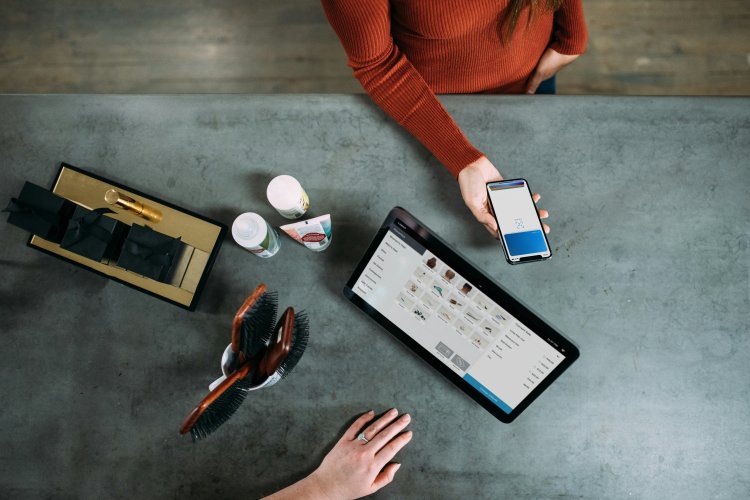Navigating the B2B Buyer's Journey: Crafting a Seamless Experience
Do you need help boosting sales and retaining clients? Consider these strategies to improve the B2B buying experience and make loyal clients.
Share this Post to earn Money ( Upto ₹100 per 1000 Views )

There's arguably nothing more important for any business owner to familiarize themselves with than the buyer's journey. In business-to-business (B2B) commerce, this process is typically more complex than its business-to-consumer (B2C) counterpart. That said, both variations share similar stages—all focusing on buyers' experiences with your brand.
What's the deal? Understanding the B2B buyer's journey is critical for clients and sellers. For buyers, a clear journey makes their decision-making easier and ensures their chosen solutions align with their business goals. Meanwhile, sellers recognizing this process can more effectively provide targeted support at each stage, improving their conversion rates.
With that, let's talk about leveraging the B2B buyer's journey to maximize your sales sustainably.
Understanding the B2B Buyer’s Journey
Navigating the B2B buyer's journey requires a thorough understanding of its distinct stages. Each stage has unique opportunities and challenges, so you must tailor your strategies to meet buyer needs and expectations.
1. Awareness stage
It all starts with businesses identifying a problem. At this stage, they try to understand their issues better and explore potential solutions. Your goal is to create content that educates and informs—high-quality blog posts and industry reports using search engine optimization (SEO) to attract the right audience and keep your brand top-of-mind.
2. Consideration stage
At this stage, buyers actively seek solutions to their problems. They compare options, evaluate vendors, and understand their pros and cons. So, focus on providing information highlighting your offerings' benefits through case studies, product demonstrations, and comparison guides. The point is to help them make an informed decision.
3. Decision stage
Finally, buyers are ready to pick a solution. They've narrowed down their options and are checking prices, support, and return on investment (ROI), among others, before finalizing their purchase. At this point, ensure your proposals are clear and compelling. It'll greatly help to offer personalized support and discounts to address each buyer's specific needs.
4. Post-purchase stage
The buyer’s journey doesn't end after the purchase. In the post-purchase stage, focus on satisfying customers and nurturing long-term relationships to increase retention. Remember, acquiring new customers is drastically more expensive than retaining them. Hence, it's in your best interest to offer seamless onboarding and continuous support to gain customer loyalty.
What Makes a Seamless B2B Buying Experience?
Creating a user-friendly B2B buying experience means staying on top of the following elements to cater to your buyers’ needs and preferences.
Personalization
McKinsey reports that personalization boosts sales, and B2B commerce is no different. Businesses want interactions that address their specific challenges and objectives. It means leveraging dynamic content, custom recommendations, and customer support based on their demographics and behavior.
Engagement
Active engagement and ongoing support throughout the buyer's journey are vital in maintaining interest and building lasting relationships. For example, you can create live demos instead of pre-recorded videos to cater to real-time Q&As. Regularly checking in with your customers also proves your commitment to their success.
Clear communication
No one wants misinformation—all buyers want precise, concise, and accurate details at every stage of their journey, from pricing to support options. Crafting a blog post or infographic with essential details is a great place to start. You can also offer landlines, SMS, emails, social media, and other channels as open lines of communication for pressing inquiries and concerns.
Efficiency
A simple buying experience saves time and reduces buyer frustration. Many companies handle it by automating routine tasks through external services or artificial intelligence. In turn, you can delegate repetitive, time-consuming tasks and focus on operations that grow your business and enable prompt buyer interactions.
User-friendliness
This element encompasses all aspects of the buying experience, from initial contact to post-purchase support. If you're an e-commerce brand, building an intuitive and easy-to-navigate website ensures buyers find what they need without contacting support for help. User-friendly and efficient checkout processes also streamline purchasing and minimize cart abandonment.
How to Craft a Seamless B2B Buying Experience
Now, let's implement these ideas and discuss how to craft a seamless experience for your B2B buyers.
Map the buyer’s journey
Familiarize yourself with the distinct touchpoints buyers experience throughout their relationship with your brand, from initial awareness to post-purchase. In doing so, you can determine which content works at what stage and which outreach campaigns are best at each phase.
It might be challenging, especially if it's your first time dealing with the buyer's journey. So, consider creating detailed buyer personas to visualize your clients’ experiences.
Leverage technology
Technology has become indispensable to modern commerce, primarily if you sell online. So, consider using customer relationship management (CRM) systems and marketing automation tools to learn about customer behaviors.
Also, you should consider SEO to boost your search engine results page (SERP) visibility and attract conversions without investing in paid advertising. Read complete guides to SEO to learn more about driving organic traffic to your website.
Collaborate with other teams
Make no mistake—your marketing and sales teams shouldn’t only work on the buyer's journey. An effective B2B buying experience requires collaboration across various departments, such as customer service and product development. Every department needs to know their clients' needs and chip in to make experiences with your brand consistent and rewarding.
Measure your success
How do you know if your strategies are working? The key is tracking metrics. Set key performance indicators (KPIs), such as:
· Conversion rates
· Customer satisfaction scores
· Time-to-purchase
· Customer churn rate
· Customer retention rate
Analyze these figures regularly to spot trends (e.g., seasonal downturns), pain points, and areas for improvement.
Leverage feedback
Don't underestimate the value of feedback—it's how you learn about your customers' first-hand experience with your offerings or campaign. Consider using surveys and reviews to gather feedback and analyze your findings to know what your customers like and don’t like. When you listen to your buyers, you can continuously adapt to their changing needs.
Elevate Your Clients’ Shopping Experience
Implementing the strategies above can help you stay on top of your clients' pressing needs and preferences. However, like any business aspect, the buyer's journey constantly evolves. What works now might not work in a month. Likewise, innovations like AI and advanced analytics are rapidly progressing.
So, you must stay informed of these shifts and adapt your strategies to remain competitive. Continuously invest in new tech, refine your approach based on feedback, and nurture an innovation- and collaboration-based culture within your organization. In turn, you can build a seamless buying experience that meets the evolving needs of B2B clients long-term.

 ipsolutions
ipsolutions 















